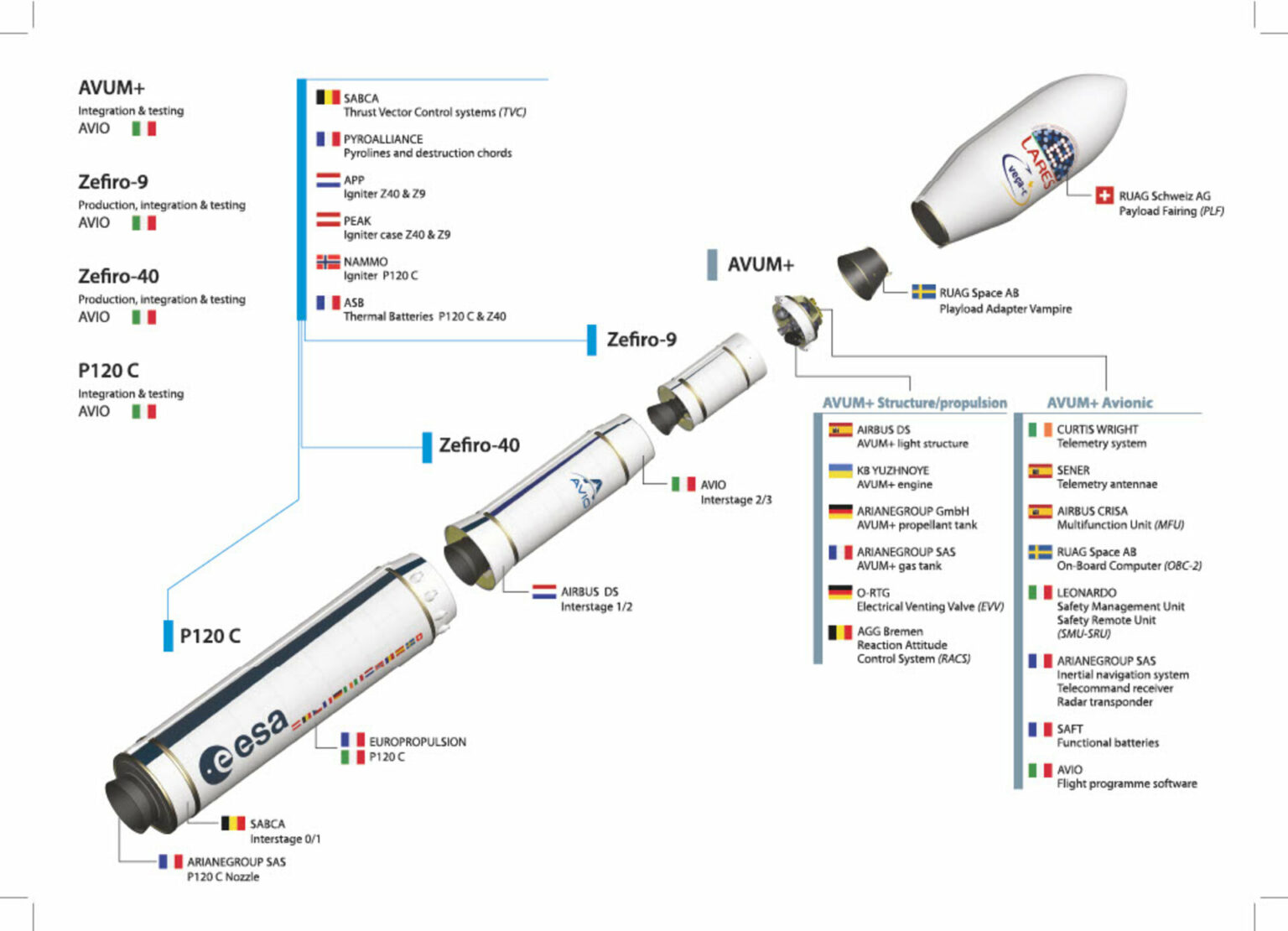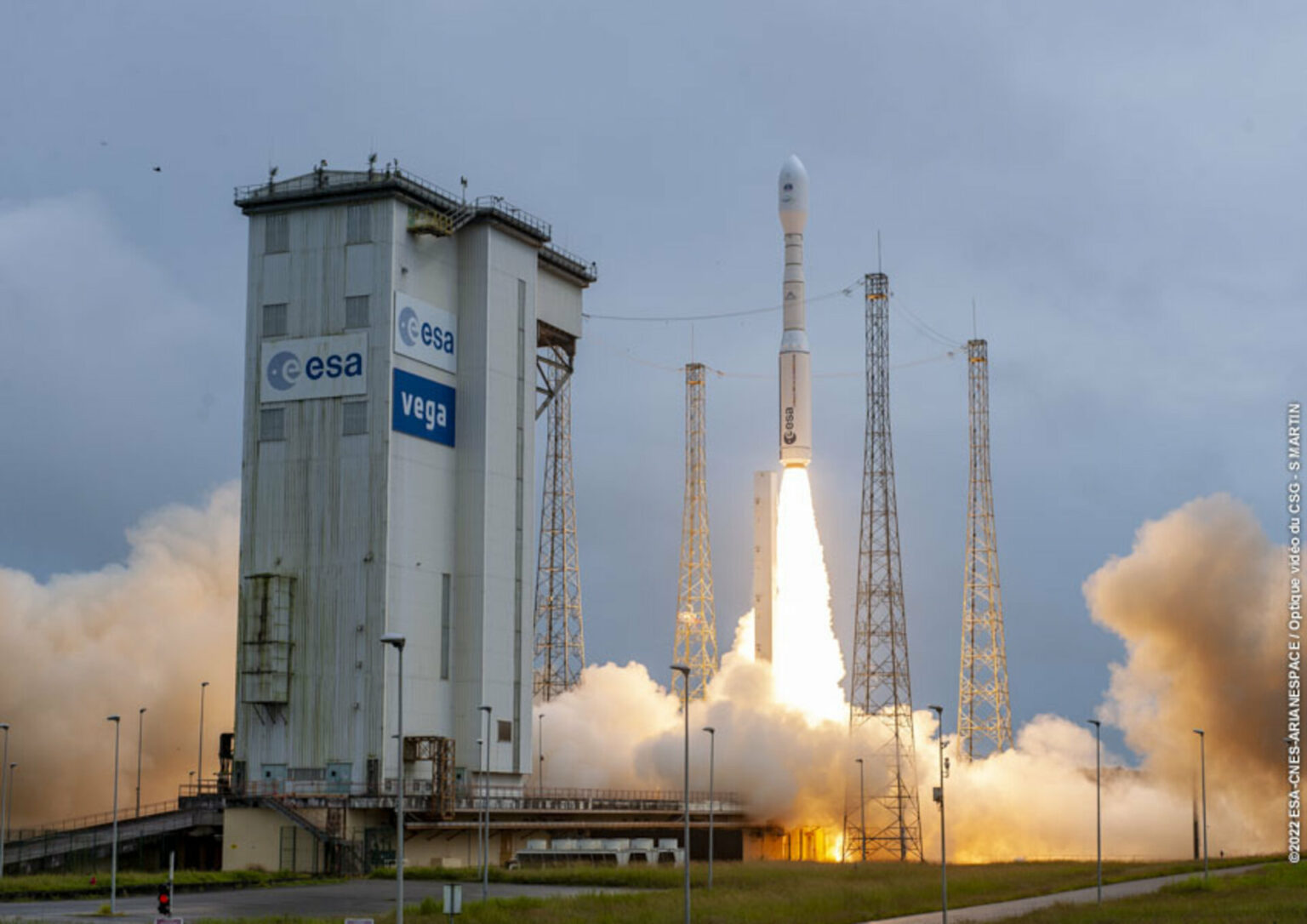On December 21, an unsuccessful lunch of Vega-C light rocket took place from the Kourou launch pad in French Guiana. The rocket failed to develop a speed sufficient to go into orbit and fell into the ocean.
Design of the Vega-C rocket
Vega-C is a modification of the light Vega rocket designed to launch cargo into polar and low Earth orbits. Its height is 35 m, its diameter is 3.4 m, and its weight (in the fueled state) is 210 tons. It can launch up to 2.3 tons of payload into a 700-kilometer sun-synchronous orbit.

The rocket has a four-stage design. The first three stages of the carrier are equipped with solid propellant engines, the fourth (AVUM+) is liquid. It is equipped with the RD-843 power unit, developed by the Pivdenne Design Office and mass-produced by the affiliated plant of the same design office in the city of Dnipro. It has the ability to turn on and off multiple times in space.
Vega-C’s debut launch took place in July 2022 and was a success. As part of its second mission, the rocket was supposed to launch two Pléiades satellites into orbit. They can take pictures of the earth’s surface with a resolution of up to 30 cm per pixel.
Vega-C crash
Vega-C’s second launch took place on December 21, 2022. The first stage worked off in normal mode. The failure occurred in the work area of the second stage. According to the telemetry, there was a loss of pressure in its engine. This led to the strong deviation of the rocket from the intended trajectory. Then it dropped the second stage and the nose dome, but due to the lack of speed, the upper stages no longer had the opportunity to “pull” the payload into orbit. In the end, it reached a height of only 110 km, after which it fell into the Atlantic Ocean.

The loss of Vega-C was a major blow to Airbus and ESA. At the moment, they are at the stage of transition to a new generation of launch vehicles. However, the commissioning of Ariane 6 is seriously delayed — its first launch will take place only in the end of 2023. Together with the accident of Vega-C, this may end up in a situation for the European space agency when it will simply not have launch vehicles ready for some time. Currently, Airbus has the last two specimens of the Ariane 5 rocket and two specimens of the Vega rocket.
Based on https://spacenews.com

